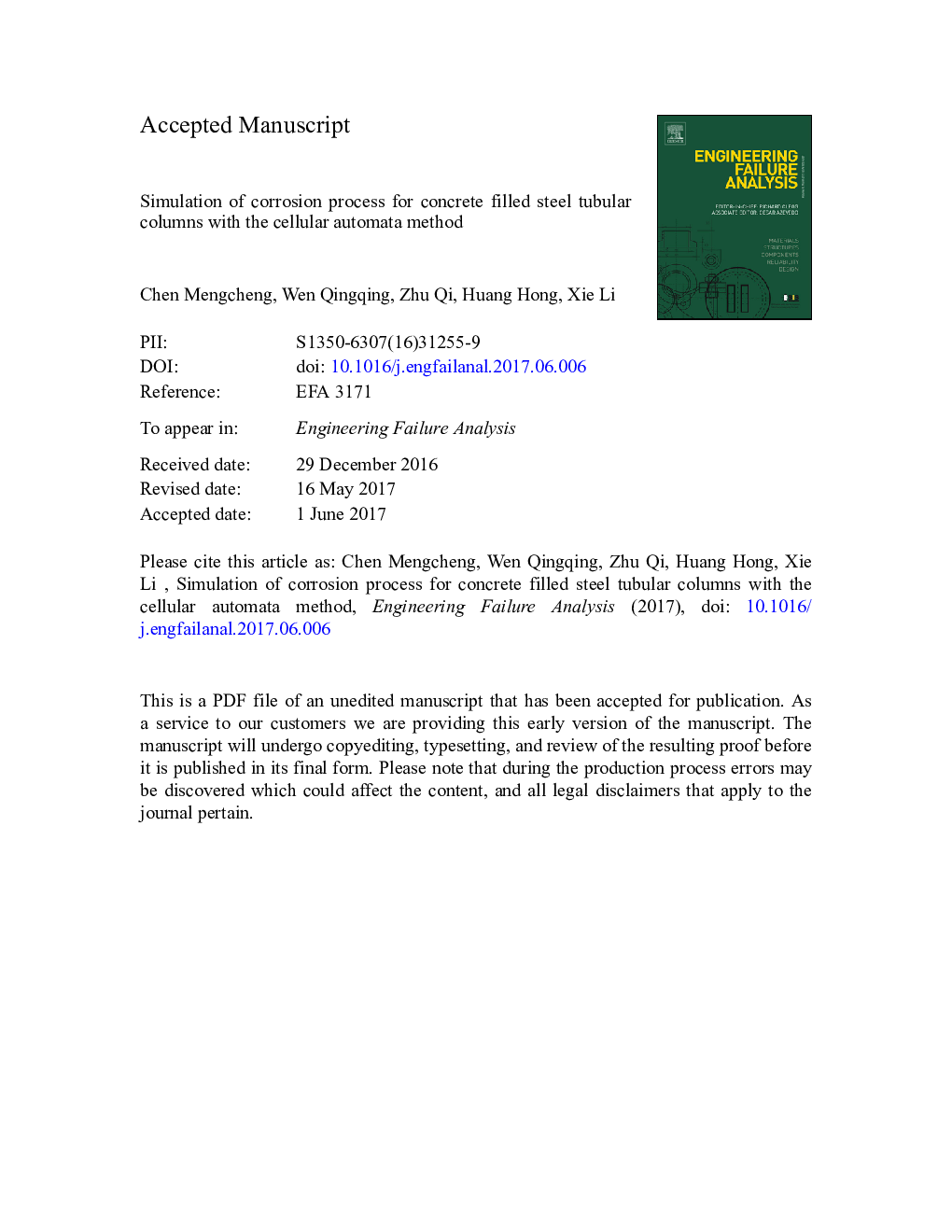| Article ID | Journal | Published Year | Pages | File Type |
|---|---|---|---|---|
| 7167784 | Engineering Failure Analysis | 2017 | 14 Pages |
Abstract
In this paper, from the mesoscopic point of view, under the assumption of metal corrosion damage evolution being a diffusive process, the cellular automata (CA) method was proposed to simulate numerically the uniform corrosion damage evolution of the outer steel tube of concrete filled steel tubular columns subjected to corrosive environment, and the effects of corrosive agent concentration, dissolution probability and elapsed etching time on the corrosion damage evolution were also investigated. It was shown that corrosion damage increases nonlinearly with increasing elapsed etching time, and the longer the etching time, the more serious the corrosion damage; different concentration of corrosive agents had different impacts on the corrosion damage degree of the outer steel tube, but the difference between the impacts was very small; the heavier the concentration, the more serious the influence. The greater the dissolution probability, the more serious the corrosion damage of the outer steel tube, but with the increase of dissolution probability, the difference between its impacts on the corrosion damage became smaller and smaller. To validate the present method, corrosion damage measurements for concrete filled square steel tubular columns (CFSSTCs) sealed at both their ends immersed fully in a simulating acid rain solution were conducted, and Faraday's law was used to predict their theoretical values. Meanwhile, the proposed CA mode was applied for the simulation of corrosion damage evolution of the CFSSTCs. It was shown by the comparisons of results from the three methods aforementioned that they were in good agreement, implying that the proposed method used for the simulation of corrosion damage evolution of concrete filled steel tubular columns is feasible and effective. It will open a new approach to study and evaluate further the corrosion damage, loading capacity and lifetime prediction of concrete filled steel tubular structures.
Related Topics
Physical Sciences and Engineering
Engineering
Industrial and Manufacturing Engineering
Authors
Meng-cheng Chen, Qing-qing Wen, Qi Zhu, Hong Huang, Li Xie,
